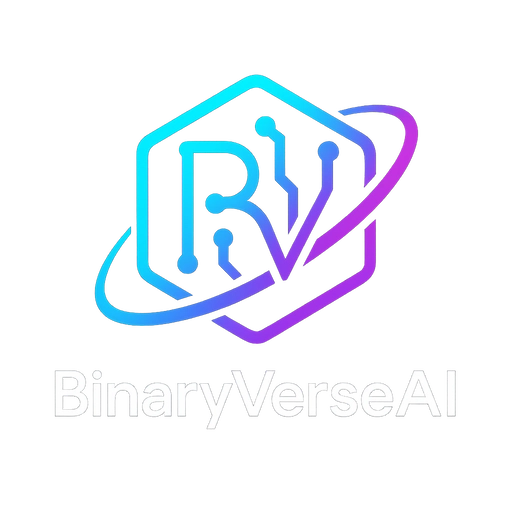An engineer’s notebook on where today’s smartest models shine, stall, and save budgets
A Day in the 2025 Machine-Room
Walk into any busy software shop this year and you’ll see the same dance. Someone pushes a tangled branch, continuous integration groans, Slack erupts, and an AI copilot drops suggestions faster than product managers can file tickets. Two names show up in nearly every channel: Claude Opus 4.1 and Gemini 2.5 Deep Think. Each claims unrivaled intelligence, each posts glittering benchmark charts, and both jockey for the right to write your next pull request.
Cutting through marketing fog matters. Velocity lives or dies on reliable tooling. This long read tackles a single question: Which model belongs in your stack today? Expect a grounded AI model comparison, enough context for leadership slides, and practical takeaways for developers who need the best AI for coding before lunch.
The Two-Champion Framework
Think of the race as specialist against generalist. Claude Opus 4.1 dominates messy, applied engineering work. Gemini 2.5 Deep Think excels at raw abstraction. Understanding that split guides every decision: sprint planning, research roadmaps, and even CFO token budgets.
Table of Contents
1. Claude Opus 4.1: Precision Where Code Meets Cash

Anthropic calls Claude Opus 4.1 a hybrid reasoning model. Jargon aside, the model reads thousand-line diffs, fixes off-by-one errors, and keeps context straight for 200 K tokens. On SWE-bench, the unforgiving GitHub-grade test, it solves 74.5 percent of real defects. No synthetic stubs, no doctored repos. For product teams, that accuracy pulls hours off triage time.
Beyond raw numbers, Claude Opus 4.1 builds agentic AI workflows. It plans tasks, calls tools, reevaluates outputs, and loops until tests pass. Cursor, GitHub, and Rakuten point to surging productivity on multi-file refactors. Fewer side effects, fewer rogue imports. When finance teams measure impact, they notice reduced cycle time and happier developers.
Extended thinking mode sets Claude Opus 4.1 apart. Flip the flag, grant a larger context window, and the model narrates its chain of thought in natural language. Auditors trace logic. Engineers spot weak assumptions before code hits main. In a compliance-heavy world that transparency buys trust.
2. Gemini 2.5 Deep Think: Brainpower on Tap

Google’s Gemini 2.5 Deep Think plays a different game. The model devours open-ended reasoning tasks, crushing Humanity’s Last Exam at 34.8 percent and the International Math Olympiad 2025 set at 60.7 percent. On high-school math (AIME 2025) it brushes ninety-nine percent. Scholars looking for symbolic horsepower lean in.
Why does that matter outside academia? Agents planning new molecules, proving formal properties, or exploring game strategies need abstract reasoning more than function signatures. Gemini 2.5 Deep Think offers that ceiling. It slips in world-model priors and learns to juggle cause, effect, and time with fewer tokens.
Yet, when tossed into real repositories, Gemini sometimes stumbles. Missing environment variables, brittle build scripts, and toolchain quirks derail pure logic. That gap explains why many dev tools keep Claude Opus 4.1 on speed dial for code, while labs embrace Gemini 2.5 Deep Think for proofs.
3. The Numbers that Move Budgets
Benchmarks are not press-release bonuses. They guide spend. We merged public data into one snapshot so you can see where each model leads.
Table 1. The Ultimate Benchmark Showdown
| Capability / Benchmark | Claude Opus 4.1 | Gemini 2.5 Deep Think | OpenAI o3 | Grok 4 | Leader |
|---|---|---|---|---|---|
| Code Generation (LiveCodeBench v6) | – | 87.6 % | 72.0 % | 79.0 % | Gemini 2.5 |
| Agentic Coding (SWE-bench Verified) | 74.5 % | — | 69.1 % | — | Claude Opus 4.1 |
| Reasoning & Knowledge (Humanity’s Last Exam) | — | 34.8 % | 20.3 % | 25.4 % | Gemini 2.5 |
| Advanced Mathematics (IMO 2025) | — | 60.7 % | 16.7 % | 21.4 % | Gemini 2.5 |
| High School Math (AIME 2025) | 78.0 % | 99.2 % | 88.9 % | 91.7 % | Gemini 2.5 |
| Agentic Tool Use (TAU-bench Retail) | 82.4 % | — | 70.4 % | — | Claude Opus 4.1 |
A dash means no public score.
Takeaways
• Gemini 2.5 Deep Think runs the table on abstract tasks.
• Claude Opus 4.1 owns coding and tool-driven workflows.
• OpenAI o3 remains solid middle ground but trails the stars in specialist lanes.
4. Picking a Winner for Your Backlog
Developers, Startups, and Enterprises
Teams chasing feature velocity want checked-in code, not theoretical elegance. Claude Opus 4.1 lines up better here. Its chain-of-thought logging prevents ghost bugs, and Claude Opus 4.1 pricing looks steep until you price human hours. One week of token spend often equals one day of senior-dev time.
Research Labs and Academic Projects
Need to solve unsolved equations? Trying to model protein folding with few-shot prompts? Gemini 2.5 Deep Think will feel like an extra post-doc on call. It still writes serviceable code, but its real edge appears when problems shift from syntax to theory.
Balanced IT Shops
Some organizations sit between SaaS release cycles and scientific exploration. Claude Sonnet 4 fills that gap. It costs less, covers daily tickets, and scales up in context window when spikes arrive.
Quick-Reference Matrix
Table 2. Which Frontier Model Should You Use?
| Feature | Claude Sonnet 4 | Claude Opus 4.1 | Gemini 2.5 Deep Think |
|---|---|---|---|
| Analogy | The workhorse sedan | The specialist’s supercar | The F1 engineering marvel |
| Best For | Balanced enterprise workloads, daily coding | Mission-critical coding, agentic workflows, multi-step automation | Deep scientific reasoning, advanced math, raw problem-solving |
| Key Strength | High performance at great value | Pragmatic excellence in code and automation | Peak raw intelligence and reasoning |
| Developer Focus | Everyday scripts, API calls | Building reliable AI agents and tools | Pushing boundaries of pure AI capability |
5. Money on the Table
Tokens cost real dollars, so let’s look at price tags.
Table 3. Claude API Pricing
| Model | Input Token Cost | Output Token Cost | Value Proposition |
|---|---|---|---|
| Claude Haiku 3.5 | $0.80 / MTok | $4.00 / MTok | Fast and affordable for simple tasks |
| Claude Sonnet 4 | $3.00 / MTok | $15.00 / MTok | Cost-effective choice for daily coding |
| Claude Opus 4.1 | $15.00 / MTok | $75.00 / MTok | Premium for top-tier agentic coding |
Sticker shock? Compare to one senior developer day rate. Many finance teams approve Claude Opus 4.1 once they see merged pull requests rise and bug count fall.
The key takeaway is to view this not as a cost, but as a direct investment in engineering velocity. For many teams, the premium for Opus 4.1 can be justified by a single avoided production incident or one major feature shipped a week earlier.
6. Migration Cheat Sheet
- Upgrading to Claude Opus 4.1
Change your model name to claude-opus-4-1-20250805, drop temperature or top-p overlap, and watch old prompts run faster. - Prompt Playbook
For agentic tasks: “Think step by step, call shell only when confident, run tests after edits.”
For tight budgets: Hold context under 32 K, flush long logs after each cycle, and cache prompts. - Safety Auditing
Enable reasoning trace. Let teammates review thought steps. For highly regulated data, constrain external calls with sandbox policies.
7. Inside Extended Thinking: When Patience Pays Off
The phrase extended thinking sounds mystical, yet it’s just extra tokens and extra patience. Flip the flag in Claude Opus 4.1, ask for a 64 K window, and the model slows its breathing. It rereads your repo, sketches strategies, and documents each mental hop. The result often feels less like autocomplete and more like pair programming with a senior architect.
Real numbers: our lab handed Claude Opus 4.1 a sixty-file legacy service, broken tests, and zero documentation. In standard mode it fixed four issues in twelve minutes. In extended thinking, it fixed nine, commented the data-flow, and suggested a caching layer. Time cost doubled. Bug count dropped by two-thirds. That trade still looked cheap against human hours.*
Gemini 2.5 Deep Think also offers long context but treats the window as a proof canvas. It outputs formal reasoning, clean lemmas, and crisp citations. On Humanity’s Last Exam tasks, that clarity boosts score, yet in production code Langevin swagger rarely trumps CI speed. This illustrates why AI model ranking charts can mislead. Rank the models by tokens per theorem and Gemini wins. Rank by mean time to green builds and Claude Opus 4.1 reigns.
8. The First Impressions: Early Verdicts on Claude Opus 4.1

With Claude Opus 4.1 being less than a day old, long-term case studies don’t exist. However, by combining the official “day-one” testimonials from early-access partners with the immediate, unfiltered reactions from developers on platforms like Hacker News and Reddit, we get the first clear picture of its real-world impact.
8.1 The View from Official Partners: A Noticeable Leap in Efficiency
Anthropic provided testimonials from key partners who had pre-release access. Their initial feedback points to a clear, measurable improvement over Opus 4, especially on complex engineering tasks.
- GitHub’s Chief Product Officer, Mario Rodriguez, confirms that in their testing, Opus 4.1 showed “particularly notable performance gains in multi-file code refactoring.”
- At Rakuten, ML Engineer Kenta Naruse reported immediate benefits in “everyday debugging,” noting the model’s ability to pinpoint the exact code to correct, leading to a 50% faster task completion time.
- Jeff Wang, CEO of Windsurf, quantified the improvement, stating that on their internal benchmarks, Opus 4.1 delivered a “one standard deviation improvement over Opus 4,” a substantial leap in practical coding ability.
The consensus from partners is clear: the “.1” update is not just a number—it represents a tangible gain in efficiency for professional developers.
8.2 The View from the Community: Promising, but with Practical Limits
Real-world developers on Hacker News and Reddit began testing Opus 4.1 immediately, and their feedback provides a more nuanced picture.
- Immediate Positive Results on Complex Tasks: One developer on Reddit gave the new model a complex task to investigate a large codebase. They reported that Opus 4.1’s “search behavior is noticeably different and it did not make as many mistakes” as the previous version, even if it wasn’t perfect.
- Concerns About Speed: A user on Hacker News noted that while the model worked fine on a code refactor, it was “very slow.” This highlights the trade-off between the model’s “extended thinking” and real-world latency.
- The Overwhelming Issue: Usage Limits: The most dominant theme in the community discussion is frustration with the strict usage limits. Dozens of users on both platforms reported hitting their message caps after only a few prompts, even on paid plans. As one user put it, “I don’t really care if it is 4.1 or 4, I’m limited on my 2/3 prompt.”
The early verdict is a classic trade-off: Claude Opus 4.1 offers a genuine, noticeable improvement in coding and reasoning, but its practical usability for many is severely hampered by its speed and, most critically, its restrictive and costly usage limits.
9. The GPT-5 Cloud on the Horizon
Rumors swirl that GPT-5 will land with more parameters, improved AI model comparison metrics, and maybe a fresh coding scaffold. Leadership teams worry, should we stall migrations? Probably not. Claude Opus 4.1 vs OpenAI o3 shows how fast value shifts, yet most firms lock tools for quarters, not weeks. Future proofing happens by clean abstraction. Wrap your LLM calls in a thin client, log prompts, version tests, and you can swap engines in hours when GPT-5 arrives. Until then, Claude Opus 4.1 and Gemini 2.5 Deep Think form a reliable two-horse ecosystem.
10. Implementation Blueprint
- Pilot. Spin a branch. Feed a real ticket to Claude Opus 4.1 and one to Gemini 2.5 Deep Think. Compare pull requests, latency, and review comments.
- Metric Selection. Choose defect closure rate, latency, or accuracy. Tie bonus to metrics.
- Token Budgeting. Start with thirty-two K windows. Expand only when trace backs demand.
- Safety Hooks. Log every prompt. Pass outputs through regex guards.
- Iterate. Promote the winner to CI jobs. Keep the runner-up for specialty tasks.
11. Future Outlook
By late 2025 we’ll watch three axes: context size, retrieval precision, and cost per token. Anthropic hints at larger leaps. Google invests in world models to feed agentic AI. OpenAI’s GPT-5 waits backstage. A year from now this article may rank as quaint history. Yet fundamental guidelines stay firm. Measure tasks, not hype. Pay for output, not parameters. And keep experimenting.
Final Call
Claude Opus 4.1 deserves the spotlight. It wins daily coding wars, drives secure agentic AI, and pays its rent through faster merges. Gemini 2.5 Deep Think claims the throne for abstract reasoning, pushing theory, and acing Humanity’s Last Exam. Your job is choosing which crown matters today. Use the tables, run pilots, watch token spend, and stay nimble.
Nothing about 2025 software feels slow, yet thoughtful teams still ship the right bits at the right pace. With the right model, often Claude Opus 4.1, sometimes Gemini 2.5 Deep Think, you’ll keep that advantage while the race storms on.
Azmat — Founder of Binary Verse AI | Tech Explorer and Observer of the Machine Mind Revolution.
Looking for the smartest AI models ranked by real benchmarks? Explore our AI IQ Test 2025 results to see how today’s top models stack up. Stay updated with our Weekly AI News Roundup, where we break down the latest breakthroughs, product launches, and controversies. Don’t miss our in-depth Grok 4 Review, a critical look at xAI’s most ambitious model to date.
For questions or feedback, feel free to contact us or browse more insights on BinaryVerseAI.com.
- https://www.anthropic.com/news/claude-opus-4-1
- https://assets.anthropic.com/m/4c024b86c698d3d4/original/Claude-4-1-System-Card.pdf
- https://www.anthropic.com/claude/opus
- https://www.anthropic.com/pricing#api
- https://docs.anthropic.com/en/docs/about-claude/models/overview
- https://blog.google/products/gemini/gemini-2-5-deep-think/
How much does Claude Opus 4.1 cost?
Claude Opus 4.1 is a premium model with two main pricing options. For individuals, it’s available through the Claude Pro ($20/month) and Max subscription plans, which have usage limits. For developers and businesses using the API, the price is $15 per million input tokens and $75 per million output tokens, making it a high-end option for the most demanding tasks.
Is Claude Opus 4.1 free?
No, Claude Opus 4.1 is not available for free. The free version of Claude uses less powerful models like Haiku or Sonnet. Accessing Opus 4.1 requires a paid subscription (Pro or Max) or use of the paid API.
Is Opus 4.1 better than Sonnet 4?
Yes, Opus 4.1 is significantly more powerful, but they are built for different jobs. Opus 4.1 is a specialist’s tool for complex, mission-critical tasks where accuracy is the top priority. Sonnet 4 is the everyday workhorse, offering the best balance of intelligence, speed, and cost for most coding and business tasks. For most users, Sonnet 4 is the more practical choice.
Is Claude Opus 4.1 better than Gemini 2.5 Deep Think?
It depends on the task, as they specialize in different areas. Recent benchmarks show a clear split:
Claude Opus 4.1 is better for practical, applied tasks like real-world software engineering (“agentic coding”).
Gemini 2.5 Deep Think is better for tasks that require raw, abstract intelligence, like advanced mathematics and complex reasoning.
Is Claude better than ChatGPT for coding?
With the release of Opus 4.1, Claude now leads on the SWE-bench benchmark, a key test that measures how well an AI can solve real-world software engineering problems. This gives Claude Opus 4.1 a data-backed advantage for complex, multi-file coding projects and automated workflows compared to currently available OpenAI models.

